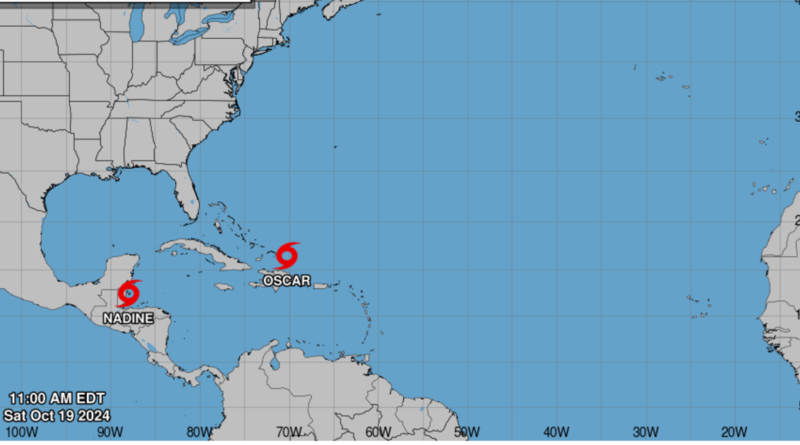Two tropical storms formed in the Atlantic Basin. This is what forecasters say about impact.
Two tropical storms formed in the Caribbean on Sunday, adding to a very busy end of the Atlantic hurricane season.
Tropical Storm Nadine formed early in the day in the western Caribbean and is moving westward toward Mexico’s Yucatan Peninsula. It made landfall near Belize City in Belize around 12 p.m. Eastern. The storm’s maximum winds were near 60 mph, the National Hurricane Center said.
Tropical storm conditions are expected across Belize and the Yucatan Peninsula through Saturday afternoon.
Heavy rain will continue across Honduras to the Yucatan Peninsula and expand westward into southern Mexico through the weekend. This heavy rain can lead to flash flooding and travel delays, especially near where the storm makes landfall and in the mountains of Oaxaca into Veracruz.
Locally gusty winds are expected on Saturday for Quintana Roo, Mexico, much of Belize and far northeast Guatemala, which could lead to downed trees and power outages.
Meanwhile, Tropical Storm Oscar – the 15th named storm of the hurricane season – formed just east of the Turks and Caicos islands, bringing tropical storm warnings for nearby islands including southeast Bahamas and the northern provinces of Cuba.
Oscar, which the hurricane described as “small,” was moving west at 13 mph and carrying maximum sustained winds of 40 mph.
AccuWeather hurricane experts believe that there is no risk of any landfalling tropical systems in the United States or direct impacts from a tropical system in general in the United States through at least the rest of October.
In Florida, Gulf Coast communities are struggling in the wake of back-to-back hurricanes, as Hurricane Helene rammed into the region less than two weeks before Hurricane Milton arrived.
The Atlantic hurricane season officially began on June 1 and finishes Nov. 30, with most activity occurring between mid-August and mid-October. Hurricane activity tends to peak in mid-September, according to the National Oceanic and Atmospheric Administration.

